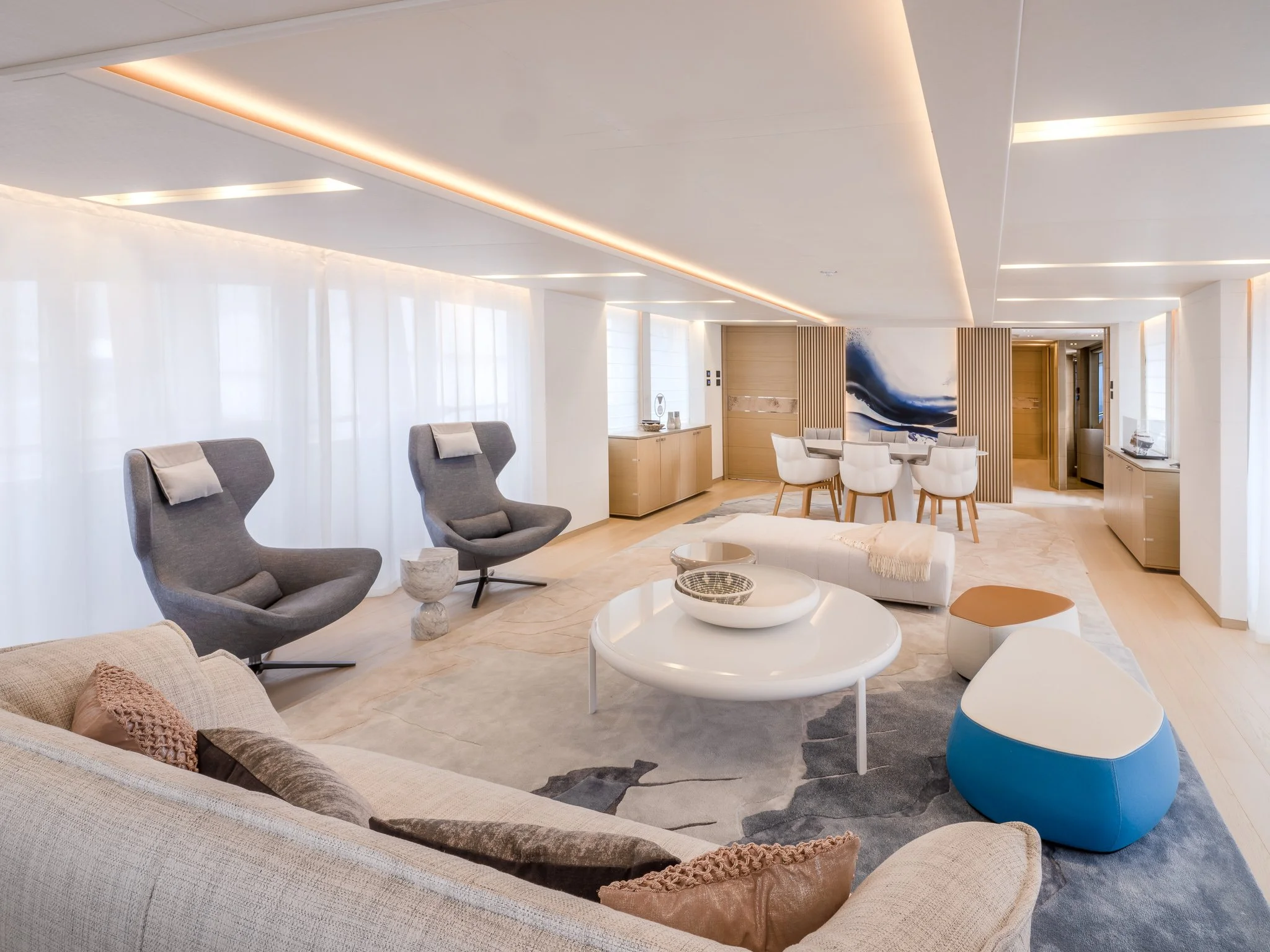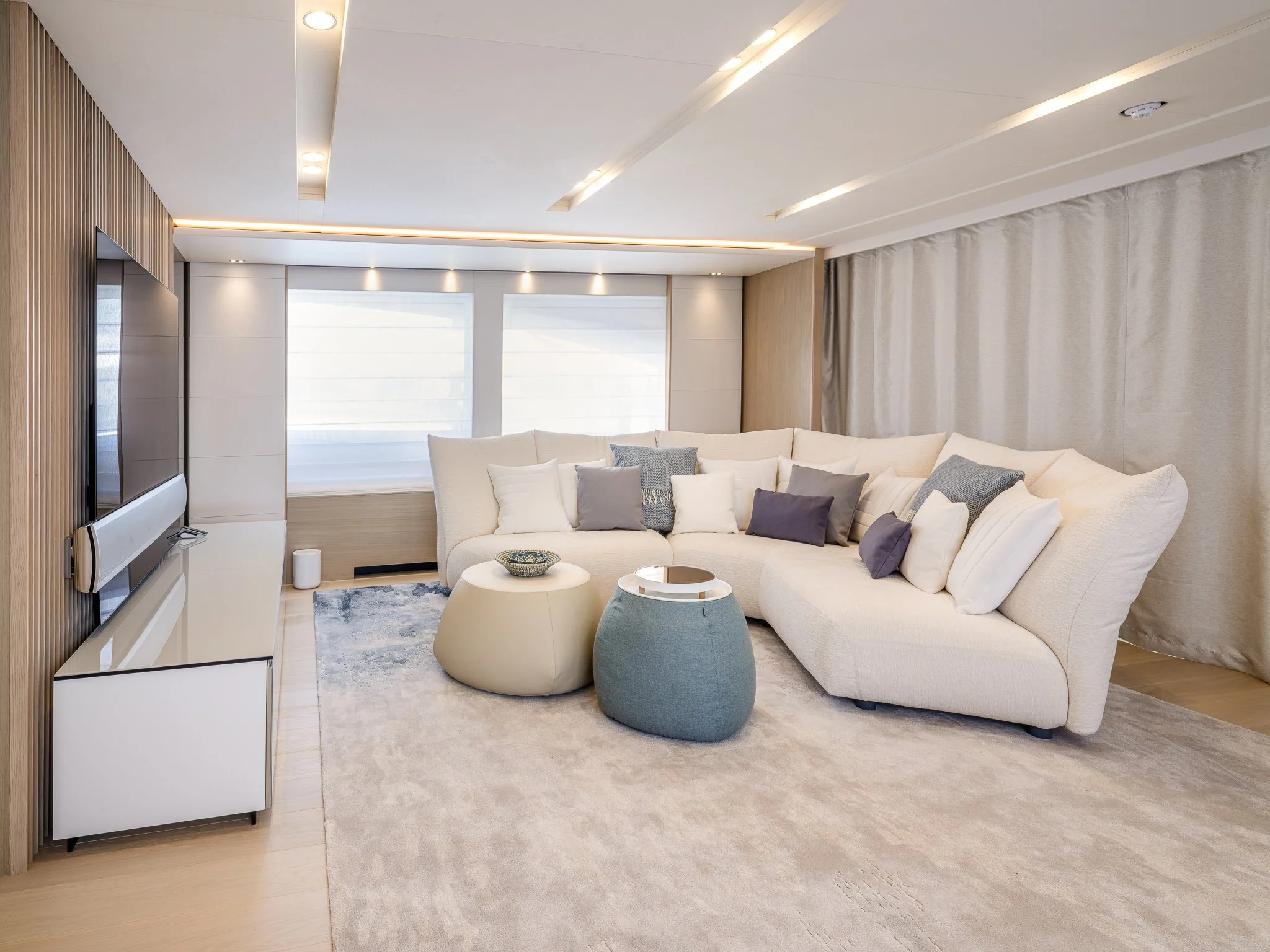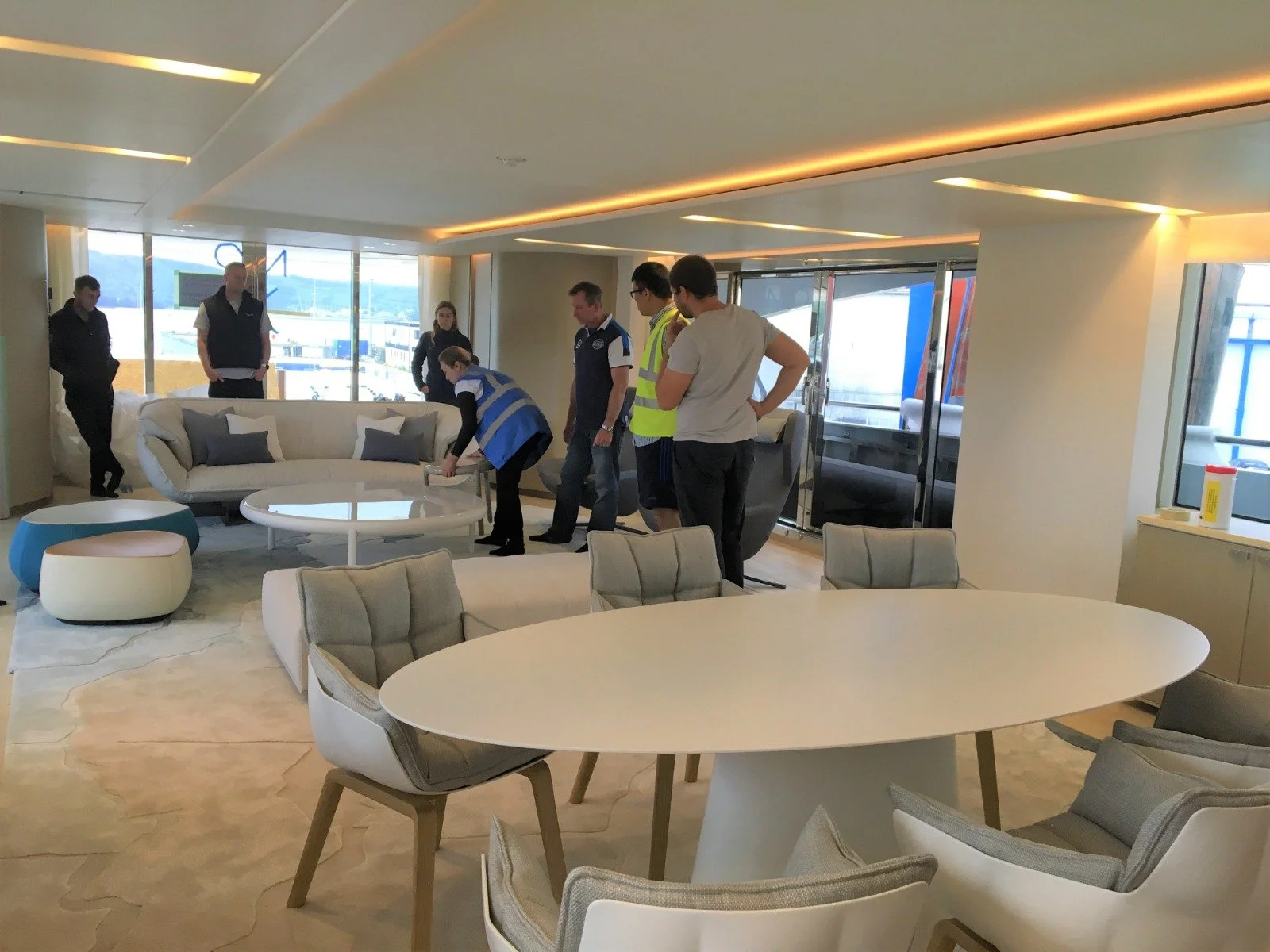Lessons learned from designing the interiors of one of the world’s largest superyachts
Designing for luxury superyacht Princess Yacht was a steep learning curve for the team led by Gwen Tan, our Design Principal, but it was one of the most exciting projects we ever got to do. Houses are fixed in one spot, but a yacht is a moving vessel so different design considerations need to be taken.
When designing houses or buildings, we work with a rectilinear space. But in a yacht, we had to deal with a lot of curves. On the other hand, we had more freedom of expression because we weren’t restricted to any county’s building codes.
The living room of the 40m long Princess Yacht. Designing for a moving vessel put our team’s skills and experiences to the test.
Here are some of the things we learned about designing for a moving vessel:
Choosing the right type of furniture to ensure safety
The furniture selection was one of the most memorable parts of the project. During our first round of furniture selection, we did not check if the item had a low enough centre of gravity. A heavy item is not necessarily more stable - if it has a high centre of gravity, it could become a deadly weapon if it comes loose and starts rolling around. It may look stable on flat ground, but a slight movement on a boat could tip it over.
We ended up having to reselect about 30% of the furniture we had initially chosen as we didn’t factor in how easily they could be secured on the boat (e.g. we couldn’t secure glass items to the floor).
We had to go back to the furniture showrooms and flip over furniture pieces to ensure that they could be secured on the yacht, because their undersides are not shown on online catalogues. Thus, we had to physically go down to the showrooms to check them.
Securing the furniture on board
For furniture that was bolted through the rugs into the floors, we had to engineer ways to hide the joints, or design ways for the furniture to be moved into lockable positions when the boat is in motion.
Speaking with the engineers and specialists about safety opened a whole new dimension for us. When reselecting the furniture, we had to go back to the physical showroom to check underneath each furniture piece to see if they could be secured properly - product catalogues and websites don’t show you these details so we had to go down to the showroom in person.
Mechanical movements on board
Lots of mechanical movements had to be designed on board - foot pass doors from the kitchen, auto doors, and sliding doors. Doors couldn’t have free hinges and swing doors needed special catches so that they don’t slam about.
Choosing the right type of materials
We were exposed to the application of different types of materials on furniture and fittings. For example, we got to use leather in a lot of furniture. In homes we don’t use leather that much in furniture types like cabinets.
An experience we cherish
It was a steep learning curve because in the short amount of time we needed to know the terms for everything in the boat and the purpose of every single item and fitting on the boat in order to change the interior fittings. Every single fixture has a purpose - either for structure, for hiding a mechanical and engineering dud, or for giving access to another serviceable space.
We couldn’t request for major fittings to be added or removed because it could affect another part of the boat, affect the boat’s balance or the fire compartmentation. Thus we had to negotiate with the yacht builders who were naturally reluctant to make major changes to the boat and come to a compromise.
Gwen directing the placement of the furniture in the living room
But the whole process felt rewarding because we put in so much effort and work to create something that the client was happy with, plus we learned a lot. We built such a strong relationship with the engineers at the end that we even gave design suggestions on what they can do in future yacht models.
The yacht was a challenging setting to design for and if given the opportunity, we would love to have another go at it.





